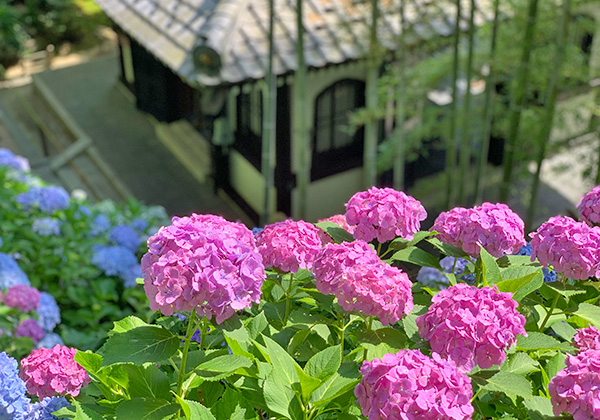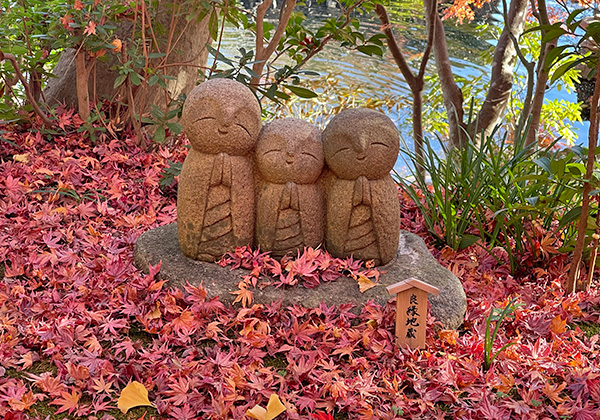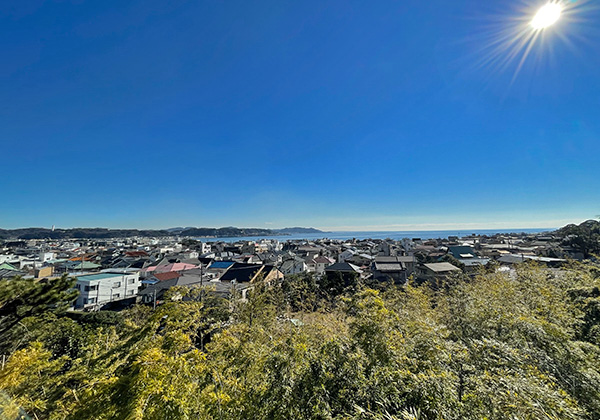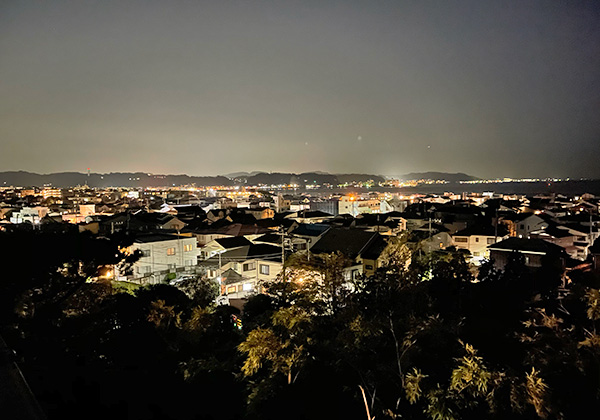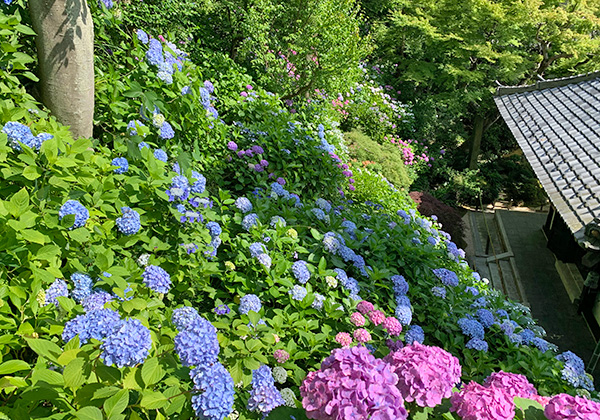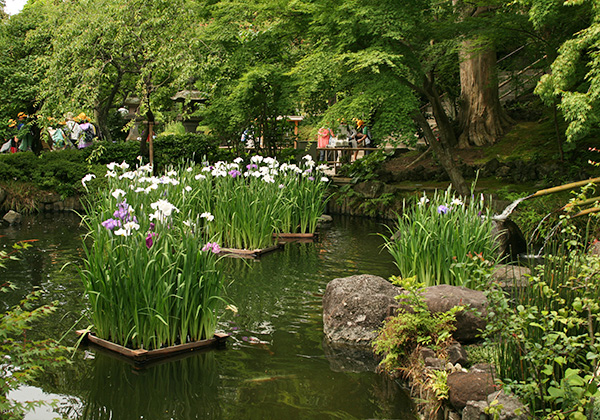Hase-dera
| Official Name | Kaikozan Jisho-in Hase-dera {Pronounced kah-e-koh-zan gee-sho-in hah-seh-deh-rah} |
|---|---|
| Religious sect | Jodo sect, Buddhism |
| Founded | in circa 736 by Fusasaki Fujiwara {foo-sah-sah-key foo-gee-wah-rah} |
| Founding priest | Tokudo {toh-koo-doh} |
| Main object of worship | Statue of Eleven-Headed Kan'non |
| Address | 11-2, Hase 3-chome, Kamakura, Kanagawa (show route from current location ) |
| Location | 1,700 meters west-southwest of Kamakura Station |
| Time needed to get there | 30 minutes |
| Admission | 400yen |
| Open | Apr-Jun 8:00-17:00 Jul-Feb 8:00-16:30 |
| Phone number | 0467-22-6300 |
| Restrooms | Available |
Historical Overview
Legend relates that Priest Tokudo (656-735) serving at Hase-dera in Nara Prefecture ordered two sculptors in 711 to carve a pair of Eleven-Headed Kan'non (Ekadasamukha in Sanskrit) statues out of a single block of camphor which was felled from the forest behind the temple. After the pair of the statues were made, Priest Tokudo dedicated one to Hase-dera in Nara and set the other adrift at the sea coast praying that may Kan'non help people who lived wherever it might reach. Sixteen years later in 736, it was washed ashore at the beach of Nagai, the other side of Kamakura on the Miura {me-woo-rah} Peninsula. Fusasaki Fujiwara (681-737), a court noble, picked up the statue and enshrined it at the present site appointing Priest Tokudo as the founding priest. Hence the Temple's assertion that it was founded in 736.
Historians do not necessarily support the legend saying that Kan'non was first introduced into Japan during the Heian Period (794-1185), well after the said statues were carved. In addition, nothing is mentioned about the Temple in the Azuma-kagami {ah-zoo-mah kah-gah-me}, official epic-type records of the Kamakura Government, and therefore, the statue of Kan'non, the main object of worship of the Temple, is neither a National Treasure nor an Important Cultural Asset. Judging from the inscription affixed to the Temple's bell reading 1264 as the year of make, one of the oldest in Kamakura, it is certain at least that the Temple had existed in the late Kamakura Period (1185-1333).
In 1342, Takauji Ashikaga {tah-kah-woo-gee ah-she-kah-gah} (1305-1358), the First Shogun of the Muromachi Period (1333-1573), had the statue gilded, and further in 1392, Yoshimitsu {yo-she-me-tsu} Ashikaga (1358-1408), the Third Shogun, made the halo for this statue.
In the Edo Period (1603-1868), the Tokugawa Shogunate gave financial aid to the Temple in view of the popularity of and people's devotion to theKan'non statue. Since then, the Temple has been a member of the Jodo sect, the Tokugawa's favorite tenet, and popularly called Hase Kan'non. Besides, there are many other statues and Buddhism-related objects in the Temple. Today's Hase-dera is a popular attraction for the tourists. Sightseeing buses stop by here after or before visiting the Great Buddha and the Temple has a spacious parking lot for those buses. The entrance is like that of an amusement park. Once inside the Temple grounds, the first thing you will see is a beautifully arranged garden.

Kan'non-do or Main Hall
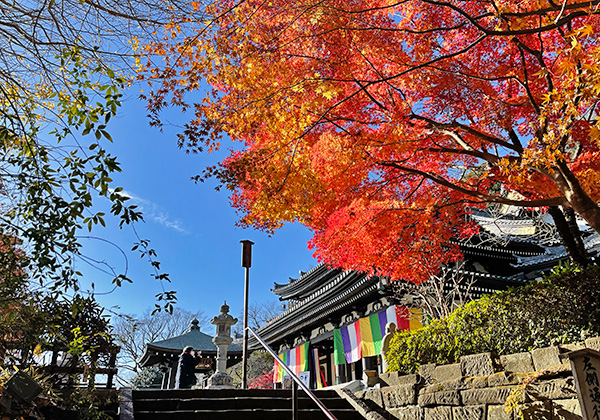
Once inside the hall, a gigantic and brilliant statue of Eleven-Headed Kan'non will look down visitors. Perhaps, it will take most of the first-time visitors by surprise with its gigantic size and brilliant golden color. Its dimension measure 9.18 meters tall, by far the largest wooden statue of Kan'non in Japan. Eleven-Headed means it has eleven additional, but small heads on top of the Kan'non's head; three in front, left and right respectively, one in center and one in the rear, all have different looks. (The rear one is said laughing, though we never be able to confirm).
Unlike ordinary statues of Kan'non, this one here has a staff called Shakujo (Khakkhara in Skt.) in its right hand and a vase with lotus flowers in its left. Normally, Shakujo is a Buddhist staff held by Jizo Bosatsu. Because of this uniqueness, the Kan'non statue of the Temple is called "Hase style", and is listed on the 4th of the Bando, and 22nd of the Kamakura Thirty-Three Kan'non Pilgrimages. During the Edo Period in particular, the statue was quite popular among the devout. Even today, quite a few pilgrims visit here and worship the statue.
In 1964, the interior of the statue was inspected, and it was revealed that the halo was repaired in 1485 and a famous Kamakura sculptor Ko-en {koh-en} (1442-1529) by name took part in it. Ko-en is well known with his Datsueba statue owned at Ennoji.
Right in front of the Statue, a smaller Kan'non statue is enthroned. But, the main statue is so big that this one seems like a statuette. Most visitors may be surprised if they were informed it is a life-size measuring as tall as 178 centimeters.
On the right-hand side of the hall is a sedentary statue of Priest Tokudo, fashioned during the latter half of Muromachi Period. The style of this 93-centimeter-tall statue sitting on a chair looks very much like those of Zen priests often seen at Zen temples.
Benten-kutsu {koo-tsu}
At the north corner of the lower level over the pond is a red torii gate, which is the entrance to the cave called Benten-kutsu. Worshipers buy candle sticks and put them on the altar after lighting, and start a short pilgrimage inside the cave stooping to enter. In addition to the Benten statue, there are sixteen statues engraved on the wall, all of them are followers and messengers of Benten. Benten (also called Benzaiten) or Sarasvati in Skt. is the Goddess of Eloquence, Music and Wisdom. As the torii gate indicates, this is an example of merging Buddhism with Shinto. Sarasvati in Buddhism was fused with Ugajin {woo-gah-gin} of Shinto. Zeniarai Benten is an independent shrine dedicating to Ugajin with the name of Benten.
